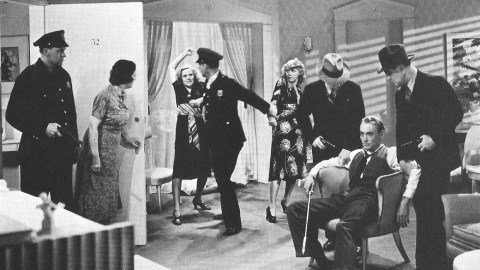Distorted Incentives: The Failure of the War on Drugs and a New Way Forward

While President Richard Nixon declared a “War on Drugs” in 1971, federal drug enforcement policy has remained relatively unchanged since the Harrison Narcotics Tax Act of 1914. In other words, our drug policy is about to celebrate its 100 year anniversary.
But not too many people are celebrating. Certainly not Ethan Nadelmann, the Executive Director of the Drug Policy Alliance and a leader in the drug policy reform movement.
In a provocative talk at The Nantucket Project, a festival of ideas on Nantucket, MA, Nadelmann surveyed an array of alternative policy options, along a spectrum “from the most punitive to the most free market.” So what do these options look like?
On one side you have what Nadelmann describes as “the Saudi Arabia/Singapore cut-off their heads, whip ’em, pull out their finger nails, drug test them with no cause, lock them up in prison camps” TK. On the other end -of the spectrum you have the free market policy with “almost no controls, almost no taxation…Milton Friedman’s wet dream.” Nadelmann points out that this was essentially the policy for cigarettes in the 1960s.
So the question is how do we move along this spectrum and find the optimal drug control policy?
According to Nadelmann, the optimal drug control policy seeks to do two things: reduce the harms associated with drug use (addiction, crime, etc). It also tries to reduce the negative consequences of government action in this area. To put this one neat sentence, as Nadelmann does in his talk, an optimal policy would be
To reduce the role of criminalization and the criminal justice system in drug control to the maximum extent consistent with protecting public safety and health.
So what is preventing us from reaching consensus on this issue and formulating the optimum policy?
Over the course of history our policy has never been guided by a rational analysis.
Nadelmann asks: “Does anyone here actually think that some early version of the Institute of Medicine evaluated the relative risks of drugs 100 years ago” and then decided which ones should be legal and which ones should be illegal?
As Nadelmann points out, our laws have nothing to do with actual risk, and everything to do with who uses which drugs, and who we perceive to use which drugs.
For instance, who were the principal opiate users in the U.S. in the 1870s?
“Middle aged white women by the millions took opium,” Nadelmann points out. These women had nothing else available to deal with aches and pains. So why didn’t people think to make a law to outlaw opium? “Nobody wanted to put grandma or auntie behind bars,” Nadelmann says.
However, when Chinese immigrants came to the U.S. and brought their tradition of smoking opium with them, that’s when we see the first prohibition laws pop up in Nevada and California.
These laws, like anti-cocaine and -marijuana laws, Nadelmann argues, were simply based on fear, not fact-based analysis.
Watch the video here:




